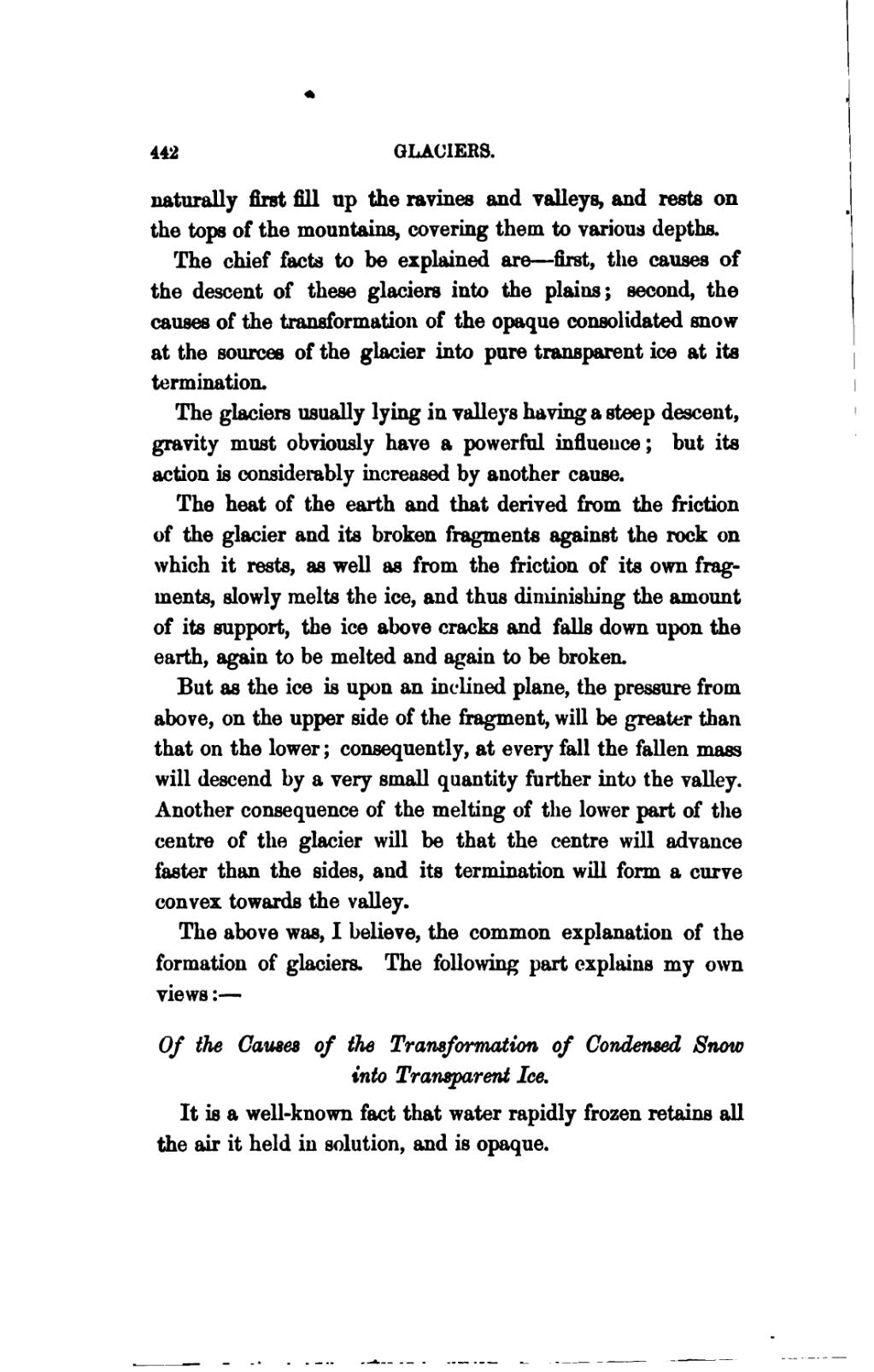naturally first fill up the ravines and valleys, and rests on the tops of the mountains, covering them to various depths.
The chief facts to be explained are—first, the causes of the descent of these glaciers into the plains; second, the causes of the transformation of the opaque consolidated snow at the sources of the glacier into pure transparent ice at its termination.
The glaciers usually lying in valleys having a steep descent, gravity must obviously have a powerful influence; but its action is considerably increased by another cause.
The heat of the earth and that derived from the friction of the glacier and its broken fragments against the rock on which it rests, as well as from the friction of its own fragments, slowly melts the ice, and thus diminishing the amount of its support, the ice above cracks and falls down upon the earth, again to be melted and again to be broken.
But as the ice is upon an inclined plane, the pressure from above, on the upper side of the fragment, will be greater than that on the lower; consequently, at every fall the fallen mass will descend by a very small quantity further into the valley. Another consequence of the melting of the lower part of the centre of the glacier will be that the centre will advance faster than the sides, and its termination will form a curve convex towards the valley.
The above was, I believe, the common explanation of the formation of glaciers. The following part explains my own views:—
Of the Causes of the Transformation of Condensed Snow into Transparent Ice.
It is a well-known fact that water rapidly frozen retains all the air it held in solution, and is opaque.
